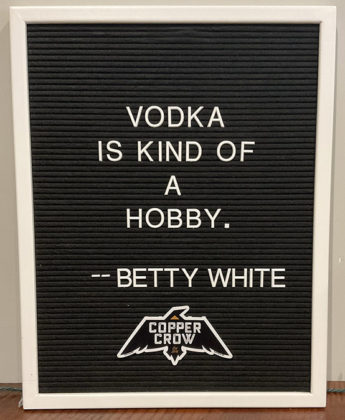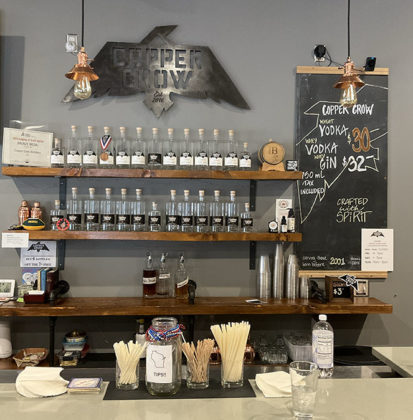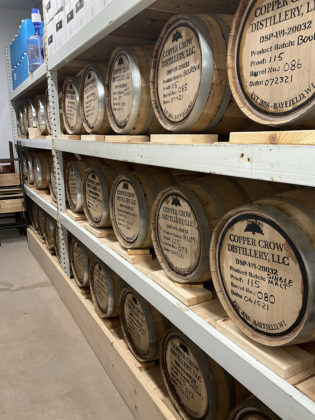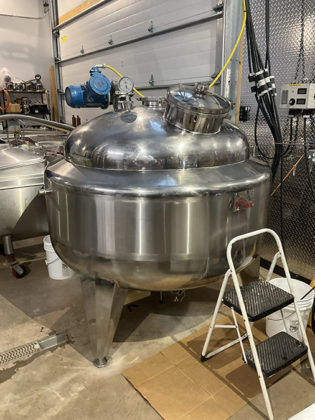After a career in the school system and law enforcement, Curt and his wife Linda opened Copper Crow, the first distillery in the US owned by Native Americans, and the first distillery within the boundary of a Native American reservation. Located in Bayfield Wisconsin their distillery produces Vodkas, Rums and Gins using some unique ingredients.
Curt’s distillery is located in the heart of one of the largest dairy producing states in the country and so he wanted to start using whey, a byproduct of the diary industry, as the fermentable for his gin and vodka. Whey is a protein-rich liquid that is separated from curds in the cheese making process and oftentimes is discarded as a waste product. Whey is a challenging fermentable because although it does have a decent sugar content, the high protein count makes it hard to manipulate and can wreak havoc on a traditional pot still. It also is very prone to lactic acid bacteria that is found naturally in milk products that will consume all the fermentable sugar.
To put in perspective how much whey Wisconsin alone produces; if the residual sugar content from all the whey produced in the state was fermented and distilled it would have enough energy to fuel every car and truck in America. Currently whey is commonly field applied as fertilizer and can create a lot of problems through runoff in the waterways. It can also be mixed with feed and fed to farmstock animals although there have been some nutritional issues caused from this as well. It also can be dumped down the drain and processed in a wastewater center. All of these disposal methodologies have a whole host of additional environmental problems so Curt decided to work to produce something usable out of the surplus whey coming out of his local dairy.
Coper Crow is working with the University of Wisconsin to refine and maximize the fermentation potential of whey (both for spirits and fuel ethanol). Curt has been refining and experimenting with whey permeate, a filtered version that removes a lot of the protein of pure whey. This permeate is a concentrated version that has a lower protein content and much higher sugar content, which makes it better for high-yield fermentation. He said, “After years of failures and successes we have our permeate pretty well dialed in”. A professor at University of Wisconsin is also breeding and developing new yeast strains that can better ferment galactose and other complex sugars coming from whey to get higher yields of alcohol. A lab out of Germany has recently released a commercial whey-focused yeast strain, although it is very expensive, and Basina didn’t have much success with it.
Stories like this highlight the exciting future of our industry and using non-traditional fermentable to create spirits that are not only unique in flavor but can connect to consumers interested in environmentally friendly products. Developing a viable fermentation on a product that has such an enormous waste footprint would have incredible effect on the environment in the long run and we will certainly keep and eye on Copper Crow to see what they come up with next.














